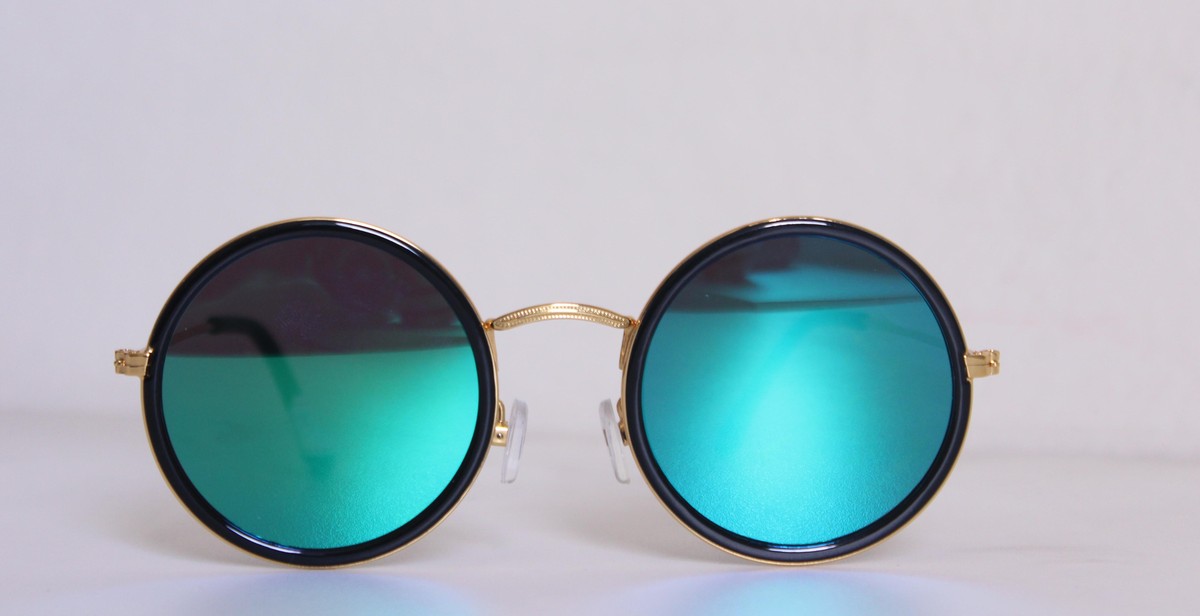How to Choose the Right Prescription Glasses: Factors to Consider When Getting New Eyewear
Choosing the right prescription glasses is crucial for maintaining good eye health and achieving optimal visual clarity. Whether you are a first-time wearer or need to update your current pair, there are numerous factors to consider when selecting new eyewear.
Why Choosing the Right Prescription Glasses is Important
Prescription glasses are not just a fashion accessory; they are a necessity for those with vision problems. Wearing the wrong prescription or poorly fitting glasses can lead to headaches, eye strain, and other discomforts. Additionally, wearing glasses that are not suited to your needs can worsen your vision over time.
Therefore, it is essential to choose the right prescription glasses that fit your specific needs and lifestyle. With so many options available in the market, it can be overwhelming to determine which pair is right for you.
Factors to Consider When Getting New Eyewear
When selecting new prescription glasses, consider the following factors:
- Your prescription needs
- Your lifestyle and activities
- The shape and size of your face
- Your personal style preferences
- Your budget
By taking these factors into account, you can choose the right prescription glasses that not only correct your vision but also complement your style and enhance your quality of life.
How to Choose the Right Prescription Glasses: Factors to Consider When Getting New Eyewear
When it comes to choosing new prescription glasses, there are a lot of factors to consider. From the shape of your face to your lifestyle needs, finding the right pair of glasses can be overwhelming. However, taking the time to choose the right glasses is important for both your vision and your overall well-being.
Why Choosing the Right Prescription Glasses is Important
Choosing the right prescription glasses is crucial for a number of reasons. First and foremost, it ensures that you have the correct prescription and are able to see clearly. Wearing the wrong prescription glasses can lead to eye strain, headaches, and even dizziness. Additionally, wearing glasses that don’t fit properly can cause discomfort and even damage to your eyes.
But beyond the practical reasons, choosing the right prescription glasses can also boost your confidence and enhance your personal style. Glasses are no longer just a functional accessory; they are a fashion statement. With so many styles, colors, and materials to choose from, finding a pair that complements your face shape and personal style can make you feel great about yourself.
So, whether you’re getting your first pair of glasses or simply updating your current ones, taking the time to choose the right prescription glasses is important for both your vision and your overall well-being.

Factors to Consider When Choosing Prescription Glasses
Choosing the right prescription glasses can be a daunting task, but it doesn’t have to be. Here are some factors to consider when getting new eyewear:
Prescription Information
The first step in choosing the right prescription glasses is to have your prescription information up-to-date. Your prescription should include your eye measurements, pupillary distance, and any other relevant information. This will ensure that your glasses are tailored to your specific needs and provide optimal vision correction.
Face Shape
Another important factor to consider is your face shape. Different frame styles suit different face shapes. For example, those with round faces may want to opt for rectangular or square frames to add some angles to their features, while those with square faces may want to choose oval or round frames to soften their features.
Lifestyle
Your lifestyle is also an important consideration when choosing prescription glasses. For example, if you lead an active lifestyle, you may want to choose glasses that are more durable and can withstand impact. Alternatively, if you spend a lot of time in front of a computer screen, you may want to consider glasses with blue light filtering lenses to reduce eye strain.
Frame Material
Frame material is another important factor to consider when choosing prescription glasses. Different materials offer different levels of durability, flexibility, and comfort. Common frame materials include metal, plastic, and acetate.
Lens Material
The lens material is also an important consideration when choosing prescription glasses. Different materials offer different levels of durability, scratch resistance, and clarity. Common lens materials include plastic, polycarbonate, and high-index plastic.
Lens Coatings
Finally, lens coatings can enhance the functionality and durability of your prescription glasses. Common coatings include anti-glare, scratch-resistant, and UV protection. Anti-glare coatings reduce glare and reflections, while scratch-resistant coatings protect your lenses from scratches and nicks. UV protection coatings protect your eyes from harmful UV rays.
By considering all of these factors when choosing prescription glasses, you can ensure that you get the right eyewear for your needs and preferences.

Factors to Consider When Choosing Prescription Glasses
Choosing the right prescription glasses can be overwhelming, especially if you are not familiar with the different factors to consider. Here are some important factors to keep in mind when getting new eyewear:
Your Prescription
The first and most important factor to consider when choosing prescription glasses is your prescription. Your prescription is the key to getting the right lenses that will correct your vision. It is important to get an updated prescription from your eye doctor to ensure that your glasses will work effectively. Your prescription will determine the type of lenses you need, such as single vision, bifocal, or progressive lenses.
Type of Lenses
There are different types of lenses available for prescription glasses, and each type has its advantages and disadvantages. Single vision lenses are the most common and are used to correct nearsightedness, farsightedness, or astigmatism. Bifocal lenses have two different prescriptions in one lens, and are used to correct both near and far vision. Progressive lenses are similar to bifocals but have a gradual change in prescription, providing a more natural transition between near and far vision.
Frame Material
Glasses frames come in different materials, including metal, plastic, and titanium. The material you choose will affect the durability, weight, and style of your glasses. Metal frames are durable and lightweight, while plastic frames are more affordable and come in a variety of colors and styles. Titanium frames are lightweight, hypoallergenic, and flexible, making them a good choice for people with sensitive skin or who engage in sports or other physical activities.
Frame Style
The style of your glasses frames will depend on your personal preference and face shape. There are different frame styles available, such as round, square, oval, and rectangular. Round frames are best suited for people with angular faces, while square frames are ideal for people with round faces. Oval frames are versatile and can complement any face shape, while rectangular frames are best suited for people with square faces.
Face Shape
When choosing prescription glasses, it is important to consider your face shape. The right glasses frames can enhance your facial features and complement your overall look. There are different face shapes, such as oval, round, square, heart, and diamond. Each face shape has a corresponding frame style that will flatter your features and enhance your appearance.
Lifestyle and Activities
Finally, it is important to consider your lifestyle and activities when choosing prescription glasses. If you engage in sports or other physical activities, you may need glasses that are durable and lightweight. If you spend a lot of time in front of a computer, you may need glasses with anti-glare or blue light blocking technology. If you have a busy lifestyle, you may need glasses that are easy to clean and maintain.
| Factor | Considerations |
|---|---|
| Your Prescription | Get an updated prescription from your eye doctor. |
| Type of Lenses | Choose from single vision, bifocal, or progressive lenses. |
| Frame Material | Choose from metal, plastic, or titanium frames. |
| Frame Style | Choose a frame style that complements your face shape. |
| Face Shape | Choose glasses frames that flatter your features. |
| Lifestyle and Activities | Choose glasses that are durable, lightweight, and suited to your lifestyle. |

Types of Prescription Glasses
There are different types of prescription glasses available, each designed to suit specific visual needs. Here are the most common types of prescription glasses:
Single Vision Glasses
Single vision glasses are the most basic type of prescription glasses. They are designed to correct vision problems like nearsightedness (myopia), farsightedness (hyperopia), and astigmatism. Single vision glasses have lenses with a single prescription power throughout the entire lens surface. They are ideal for people who need glasses for distance or reading only.
Bifocal Glasses
Bifocal glasses have lenses that are divided into two sections. The upper section corrects distance vision, while the lower section corrects near vision. Bifocal glasses are ideal for people who have both distance and near vision problems. They eliminate the need for two separate pairs of glasses.
Progressive Glasses
Progressive glasses are similar to bifocal glasses, but they have a gradual transition between the distance and near vision sections. This provides a more natural visual experience, as there is no visible line between the two sections. Progressive glasses are ideal for people who need glasses for both distance and near vision, but do not want the visible line of bifocal glasses.
Reading Glasses
Reading glasses are designed to correct presbyopia, a condition that affects near vision as people age. Reading glasses have lenses with a single prescription power that magnifies near objects. They are ideal for people who need glasses for reading or other close-up activities.
Computer Glasses
Computer glasses are designed to reduce eyestrain and fatigue caused by prolonged computer use. They have lenses with a prescription specifically designed for the distance between the eyes and the computer screen. Computer glasses also have an anti-reflective coating to reduce glare and a blue light filter to reduce the amount of blue light emitted by computer screens.
Sports Glasses
Sports glasses are designed for people who play sports or engage in other physical activities. They have lenses that are impact-resistant and frames that are durable and lightweight. Sports glasses can also have prescription lenses for people who need corrective vision while playing sports.
| Type of Prescription Glasses | Description |
|---|---|
| Single Vision Glasses | Basic glasses with a single prescription power throughout the entire lens surface. |
| Bifocal Glasses | Glasses with lenses divided into two sections for distance and near vision. |
| Progressive Glasses | Glasses with a gradual transition between the distance and near vision sections. |
| Reading Glasses | Glasses with lenses that magnify near objects for people with presbyopia. |
| Computer Glasses | Glasses with lenses designed to reduce eyestrain and fatigue from computer use. |
| Sports Glasses | Glasses with impact-resistant lenses and durable, lightweight frames for sports and physical activities. |

Tips for Choosing the Right Prescription Glasses
Getting new prescription glasses can be an overwhelming experience, especially if you have never done it before. Here are some tips to help you choose the right pair:
Get a Comprehensive Eye Exam
The first step to choosing the right prescription glasses is to get a comprehensive eye exam. This will help determine your exact prescription and identify any underlying eye conditions that may affect your vision. It is important to get your eyes checked regularly, as your prescription can change over time.
Set a Budget
Before you start shopping for prescription glasses, it is important to set a budget. Prescription glasses can range in price from affordable to very expensive, so it is important to determine what you can afford before you start shopping.
Consider Your Wardrobe
When choosing prescription glasses, it is important to consider your wardrobe. You want to choose glasses that complement your personal style and work well with your wardrobe. Consider the colors and styles of your clothing when choosing frames.
Choose a Reputable Retailer
Choosing a reputable retailer is important when buying prescription glasses. Look for a retailer that has a wide selection of frames, offers warranties, and has knowledgeable staff who can help you choose the right pair of glasses.
Try On Multiple Frames
When choosing prescription glasses, it is important to try on multiple frames to find the right fit and style for you. You want to choose frames that are comfortable and fit well on your face. Take your time and try on several pairs before making a decision.
Ask for Opinions
If you are having trouble choosing the right pair of prescription glasses, ask for opinions from friends and family. They can provide helpful feedback and offer suggestions that you may not have considered.
| Summary |
|---|
| 1. Get a comprehensive eye exam |
| 2. Set a budget |
| 3. Consider your wardrobe |
| 4. Choose a reputable retailer |
| 5. Try on multiple frames |
| 6. Ask for opinions |

Conclusion
Choosing the right prescription glasses is crucial for good vision and eye health. With so many options available, it can be overwhelming to make a decision. However, by considering the factors discussed in this article, you can narrow down your choices and find the perfect pair of glasses for your needs.
Remember to consider:
- Your prescription
- Your face shape
- Your lifestyle
- Your personal style
It’s also important to choose a reputable eye care professional and optician who can guide you through the process and ensure that your glasses are properly fitted.
Investing in high-quality prescription glasses may seem like a significant expense, but it’s worth it for the long-term benefits to your vision and overall well-being. Don’t hesitate to ask questions and take your time making a decision.
Remember, your glasses are an essential tool for daily life, so choose wisely!
| Author: | John Smith |
| Date: | May 1, 2021 |
